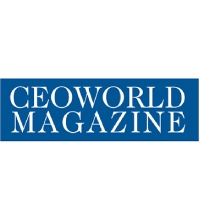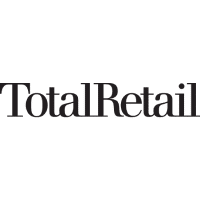It’s impossible to turn on any television or radio news program today without hearing the dreaded word discussed by economists, politicians, and leaders worldwide – Inflation!
Consumables are more expensive, interest rates are high, and the cost of living is at its peak.
We have all seen and heard the numbers as the experts weigh in. However, as business owners and consumers, you should know the effects of inflation on your bottom line.
According to the International Monetary Fund, global growth is expected to slow down this year. Calculated at 6% in 2021, it fell to 3.2% in 2022 and will drop even further to 2.7% in 2023, making it the weakest growth profile since 2001. On the other hand, experts predict that global inflation will rise to 6.5% in 2023, compared to 4.7% in 2021.
To understand the consequences of inflation, we must first understand what happens during inflation. This article covers all bases. You will find out how inflation is measured and the effects of raising prices on your daily business and personal transactions. More importantly, you will learn tips to survive and thrive!
What Is Inflation?
Inflation is the gradual loss of purchasing power. Simply put, due to inflation, your dollar will not go as far today as it did yesterday.
“Inflation is when you pay fifteen dollars for the ten-dollar haircut you used to get for five dollars when you had hair.” ― Sam Ewing.
Though more gradual, we see the evidence of inflation mainly in the rise in the prices of goods and services or the devaluation of currencies. Yet, it’s not just consumers who carry the burden of inflation. Increasing fees for raw materials and operating costs mean that small businesses feel the pinch too.
In a healthy economy, annual inflation is a sign of pricing stability. The Federal Reserve recommends low inflation rates of up to 2% year-on-year. This stimulates a slow but steady increase in prices, which boosts profits for small businesses. It encourages spending by increasing demand and productivity right when the economy slows down and needs a push.
On the other hand, when inflation surpasses growth, we hear warning bells and see the unmistakable signs of a struggling economy.
How Does Inflation Influence Purchasing Power?
We see the effects of inflation on businesses early on when we see a loss in purchasing power. This is not just limited to households and consumers. Small businesses and large corporations also experience it. A loss in purchasing power occurs when the price of the items or services they buy suddenly increases without a corresponding increase in their income.
How Does Inflation Affect a Business and Its Customers?
Households, or consumers, lose purchasing power when the prices of items they buy, such as food, utilities, and gasoline, increase.
Companies lose purchasing power and witness a decline in profits when the costs of raw materials like coal crude oil, intermediate products like flour and steel, and transportation, shipping, and machine parts, suddenly increase.
As a response, companies raise the prices of their products or services to offset inflation and maintain their business overheads. This means that consumers absorb these price increases.
A price jump can be tricky for businesses to navigate, as it could be a turn-off for their customers, who end up looking for other vendors offering lower prices. So they must ensure they increase their prices to cover costs without inadvertently suppressing demand for their product in their market.

Inflation Versus Deflation: Why Do We Need to Maintain a Balance?
When understanding inflation, it’s also essential to look at the other side of the coin. At the opposite end of the spectrum lies deflation, which occurs when the prices for goods and services in the marketplace decrease. As a result, the purchasing power increases, and consumers can buy more products with less money.
Factors that could lead to deflation include:
- A boost in productivity
- An overflow of consumer goods
- Readily available services
- A decrease in overall demand
- A reduced supply of money and credit
On the flip side, deflation can also weaken the economy, leading to recessions. As a result, investments like stocks and bonds or real-estate investments become risky.
Maintaining a balance is the key to a stable economy because extreme inflation or deflation is not good for business!
How Is Inflation Measured?
Complex Calculations, but Simple Concepts
To calculate the inflation rate, we must determine the current value of various household goods and services, referred to as a price index.
In order to do this, we need to find out how much the ‘average’ household spends on goods and services and then index that amounts back to some arbitrary base year. Then, to see how much the cost of living has increased over time, repeat this calculation every month, quarter, and year.
For example, in the United States, the Bureau of Labor Statistics calculates a Consumer Price Index (CPI), which determines the changing prices that urban consumers pay for different goods and services compared to previous years. It can be broken down by region but is reported for the whole country.
In addition, we also have the Personal Consumption Expenditures (PCE) price index – published by the US government’s Bureau of Economic Analysis, which takes a broader range of expenditures, including out-of-pocket expenses for healthcare. They also use multiple business surveys to add context to the data.
5 Consequences of Inflation on Businesses
Signs of inflation usually make small business owners nervous, and for good reason. A survey by Digital indicated that 2 out of 3 small businesses could close permanently if inflation increases.
Here’s why inflation has a negative effect on businesses:
1. Higher Interest Rates in The Long Run
The initial reaction to inflation is to lower the interest rate and support consumers in the short term. However, governments and banks then raise rates to compensate for the loss of purchasing power. This discourages business borrowing, leading to decreased investments in capital goods.
2. Lower Exports and Disrupted Supply Chains
Other countries cannot afford higher-priced goods and raw materials, which decreases profits from exports and disturbs supply chains for different industries, resulting in a domino effect.
3. Lower Savings
Inflation discourages saving, which slows down economic growth. People tend to buy more in the present before prices increase even more in the future.
4. Tax Increases
Higher prices lead to tax increases. So even though the consumer’s purchasing power decreases, they still pay more taxes.
5. Unhappy Customers
Your pricing will usually increase to offset the expenses of running a business. That burden is borne by your customer, who is naturally unhappy with the change.

How to Adjust Business for Inflation
When the going gets tough, the tough get going! How can you adjust your business operations to protect your small business from inflation? Here are some tips to help:
1. Stay Agile with Your Pricing Policy
Price and profit studies in multiple markets have documented how a 1% boost in price realization typically means a gain of 8-12% in operating profits. However, pricing policies need to be balanced with consumer research. So how do you increase the prices of your goods and services without losing customers?
Be Transparent
Don’t hide behind wordplay. Studies show that customers appreciate open communication using clear language when companies disclose changes in their pricing.
Utpal M. Dholakia, Professor of Marketing at Rice University’s Jesse H. Jones Graduate School of Business, said, “Call the action a price increase, not a price adjustment, a price change, or another euphemism. While this may seem small, euphemistic messaging can cause serious harm, fraying the relationship with loyal customers.”
Scope Out Your Competitors
Customers are more likely to accept a change in prices if other companies in the same industry have also raised their prices. Invest in detailed market research to understand how your competitors deal with inflation. Have they simply increased their rates in a blanket move, or have they cherry-picked certain products and varied the price increase? Have they offered perks, discounts, or benefits to soften the blow?
Focus on Customer Satisfaction
A happy customer is a loyal customer. So before raising your prices, ensure that your consumers are satisfied with the quality of your products and services. Then, they will likely stick with you even if your costs increase.
2. Stabilize Your Cash Flow with Invoice Factoring
Inflation invariably leads to outstanding invoices. As a small business owner, you know that unpaid invoices can affect your business. However, while waiting for payments to come in, funding the day-to-day costs of running your business becomes challenging. This is where invoice factoring comes in!
When you tie up with a factoring company, they buy your invoices and accounts receivable, giving you most of the dues while cutting a service charge. You get access to ready funds while the onus of collecting payments from your customers now falls to the factoring company. This leaves you free to focus on growing your business.
Stabilizing your cash flow with invoice factoring can be a smart business move during an economic downturn with rising interest rates and inflation.
3. Take Advantage of Lowered Interest Rates
Have you ever wondered how your interest rates are calculated on personal loans, business loans, or credit card payments? Let’s break it down.
The Federal Open Market Committee (FOMC) meets eight times a year to decide a target lending rate that banks should levy on their borrowers. This is called the federal funds rate. Every bank is required by law to reserve funds for emergencies. Therefore, they can borrow from other banks at a prime interest rate if their reserves fall. The FOMC calculates the federal funds rate based on the status of the economy and predicts inflation or recession. If a recession is expected, they may decrease the prime rates to encourage market growth.
Some business owners take advantage of the decreased prime rates to refinance their existing loans. Those who have not taken on any debt may be lured into taking out a loan when tempted by these low rates. The banks tend to adjust the repayment terms and lower your monthly payments. However, you should remember that prime rates are decreased to stimulate growth in the face of a recession. Paying back your bank loan amount may become difficult, even with lowered interest rates.
4. Research Alternative Funding Options
Inflation usually brings a dip in sales and reduced footfall in retail businesses. This is when building a source of steady working capital can help you survive tough times. Retail store financing is integral if you want your business to stay afloat.
Traditional financing can be complex, with high-interest rates and stringent eligibility criteria. Researching alternative funding options can make this process easier for retailers.
Conclusion
Companies that reduce their exposure to the rising costs brought by inflation are the ones that successfully maintain their growth margins, even in the face of recession.
The measures you take to ride out a recession don’t just serve you well during tough times, they also provide tools and capabilities to help your business thrive when interest rates and the economy stabilize. The methods you use to respond to rising costs will also help you succeed when prices fall. Long-lasting business operations can tackle inflation by staying focused on quality improvement and securing consistent working capital through alternative funding options. The ability to remain agile with smart and flexible pricing policies will help your small business ride the wave!



























